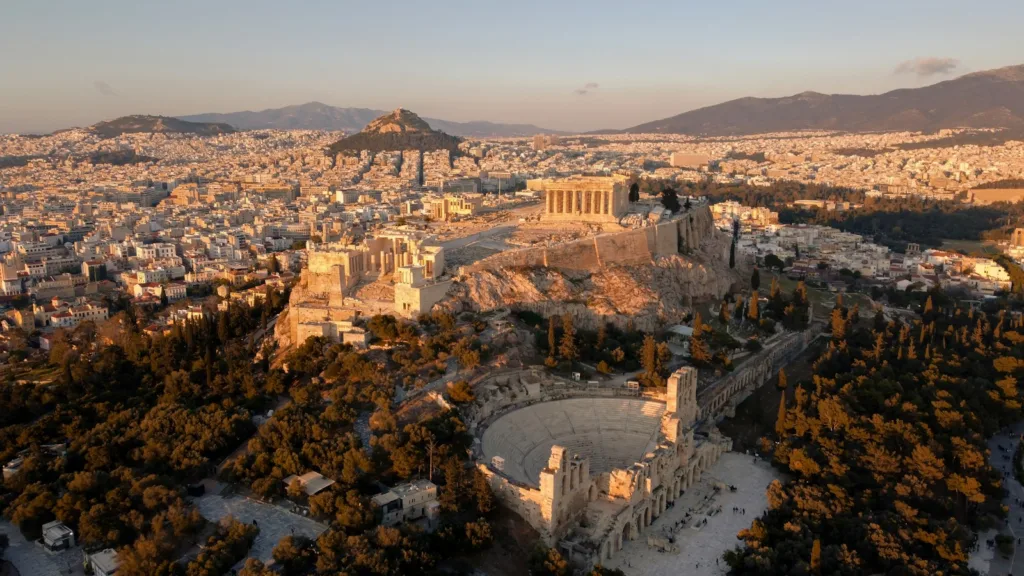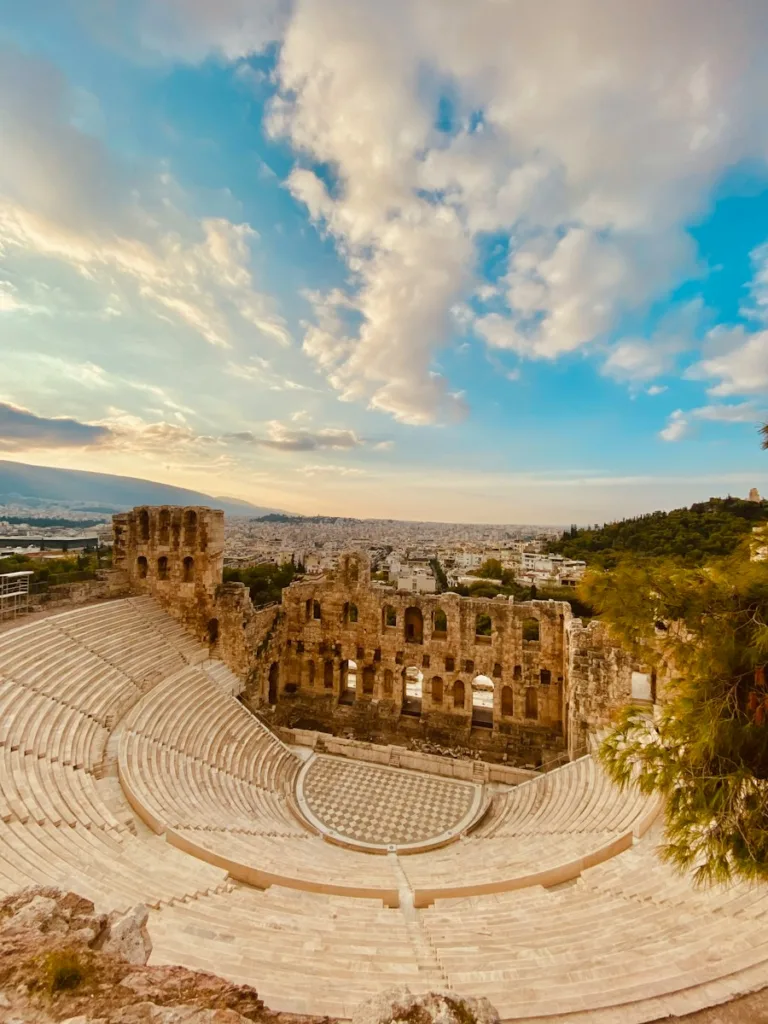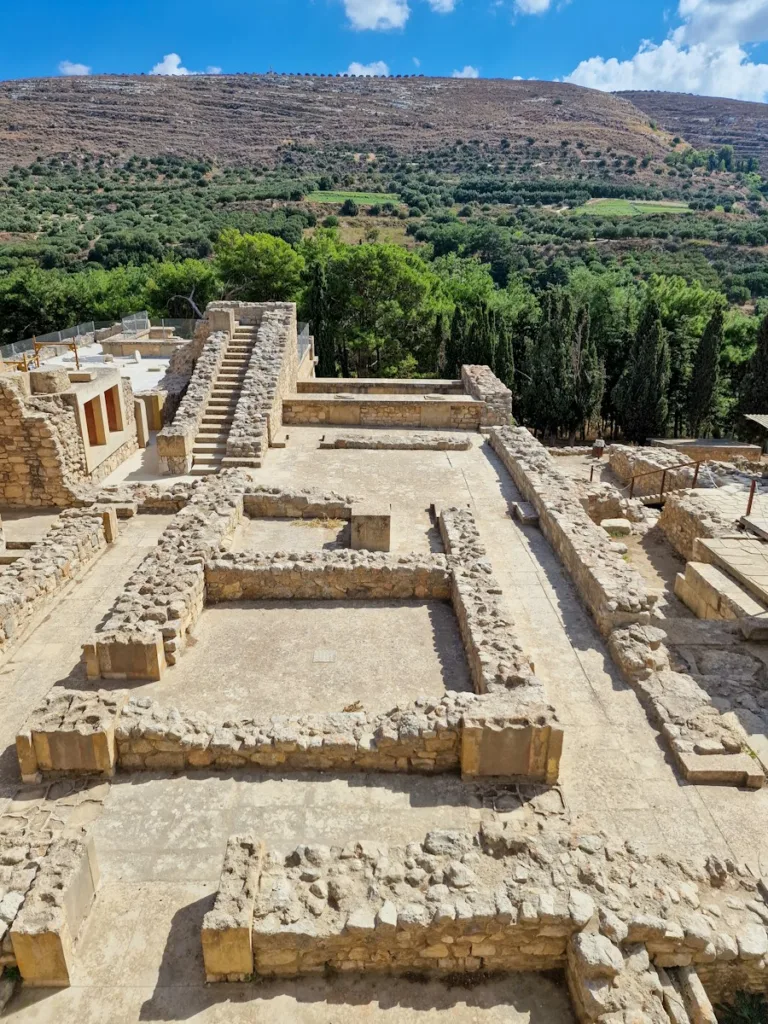Table of Contents
The ancient Greeks left an indelible mark on the world, not only through their advancements in philosophy and politics but also through their architectural marvels. In this exploration, we delve into the rich tapestry of Greek architecture, uncovering the timeless beauty and enduring influence that continue to captivate enthusiasts and architects alike.
Introduction
Greek architectural marvels stand as testaments to a civilization that valued not only functionality but also aesthetics. From temples and theaters to bridges and roads, each structure tells a story of innovation and cultural significance.
The Classical Orders: Pillars of Beauty



At the heart of Greek architecture lie the classical orders—Doric, Ionic, and Corinthian. These distinct pillars have graced structures like the Parthenon, showcasing the Greeks’ mastery in combining form and function.
The Acropolis: Crown Jewel of Athens





Perched atop the city of Athens, the Acropolis remains an iconic symbol of Greek civilization. The Parthenon, with its intricate architectural elements, stands as a testament to the perfection achieved by ancient Greek builders.
Majestic Temples: A Testimony to Devotion




Greek temples were not merely places of worship; they were architectural wonders that reflected the Greeks’ devotion to their gods. Explore the intricacies of these majestic structures and their role in ancient Greek society.
Amphitheaters: Stages of Spectacle and Drama



In the realm of entertainment, Greek amphitheaters took center stage. From the Theater of Dionysus to the Epidaurus Theater, these structures hosted plays, fostering an appreciation for drama that echoes through the ages.
Influence on Modern Architecture




The impact of Greek architecture extends far beyond ancient times. Modern buildings around the world borrow elements from Greek design, paying homage to the enduring legacy of these classical structures.
Greek Architectural Materials: Crafting Timeless Structures





The Greeks employed materials like marble and limestone to craft structures that would withstand the test of time. Explore the significance of these materials and their role in preserving the integrity of Greek architecture.
The Mythical Labyrinth: Minoan Architecture



Before the rise of classical Greek architecture, the Minoans laid the groundwork for future marvels. Uncover the unique features of Minoan architecture and its influence on the architectural language of ancient Greece.
Architectural Sculptures: Breathing Life into Stone




Sculptures weren’t mere embellishments; they were integral to Greek architecture. Discover how these artistic expressions breathed life into stone, telling stories and adding a layer of depth to architectural marvels.
Theatrical Architecture: Staging Stories in Stone



Greek theaters were more than venues for performances—they were carefully designed spaces where drama unfolded. Explore the connection between architecture and Greek drama in these historic theaters.
Engineering Marvels: Bridges, Aqueducts, and Roads



Beyond monumental structures, the Greeks demonstrated prowess in engineering. Discover the marvels of bridges, aqueducts, and roads that contributed to the development of Greek infrastructure.
Architectural Symbolism: Beyond Aesthetic Appeal
Greek architecture wasn’t just about aesthetics; it carried profound symbolism. Uncover the hidden meanings behind architectural elements, adding layers of cultural significance to these timeless structures.
Preservation Efforts: Safeguarding the Legacy


Preserving Greek architectural marvels is an ongoing challenge. Explore initiatives aimed at safeguarding these treasures and the hurdles faced in the conservation of ancient structures.
Touring Greek Architectural Marvels Today





For enthusiasts eager to witness these wonders firsthand, information on visiting famous Greek sites awaits. Gain insights and tips for a memorable journey through the architectural wonders that continue to inspire.
Conclusion
As we conclude our journey through Greek architectural marvels, it becomes evident that their impact is far-reaching and enduring. The fusion of art, science, and cultural significance in these structures has left an indelible mark on the world of architecture.
FAQs
- Are all Greek temples built using the same classical orders?
- No, different temples may feature different classical orders based on the architect’s choice and the purpose of the temple.
- How has Greek architecture influenced modern buildings?
- Greek architecture has influenced modern buildings through the incorporation of classical elements such as columns, pediments, and symmetry.
- What challenges do preservation efforts face in safeguarding Greek architectural marvels?
- Preservation efforts often face challenges such as environmental factors, urban development, and the need for ongoing maintenance.
- Can visitors enter the Parthenon on the Acropolis?
- No, entry into the Parthenon is restricted, but visitors can explore the surrounding area and enjoy panoramic views of Athens.
- Which is the oldest Greek amphitheater still in use today?
- The Theater of Epidaurus is considered one of the oldest Greek amphitheaters still in use, known for its exceptional ac
